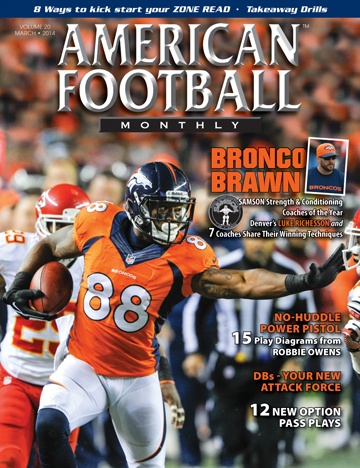Article CategoriesAFM Magazine
|
AFM Subscribers Ask with Joe Willis (Part I) Head Coach, Cedar Park High School (TX)© More from this issueJoe Willis is the head coach of 2012 State Champion Cedar Park High School (TX). A defensive specialist, Coach Willis uses multiple looks in his 3-4 defense to slow down an up-tempo offense. Cedar Park calls their defense like they call their offense Ė marrying the front and coverage calls together and using disguises pre-snap on every play. They use a combination of slants, stunts, and blitzes to help defend the no-huddle offense. Coach Willis answers your questions. How do you best defend the trips formations and 2 X 2 sets when your opponent runs both the zone read but also passes out of it? Mike Sherlock, Assistant Coach, Richmond High School (MO).
|
|
|||||||
| HOME |
MAGAZINE |
SUBSCRIBE | ONLINE COLUMNISTS | COACHING VIDEOS |
Copyright 2025, AmericanFootballMonthly.com
All Rights Reserved





